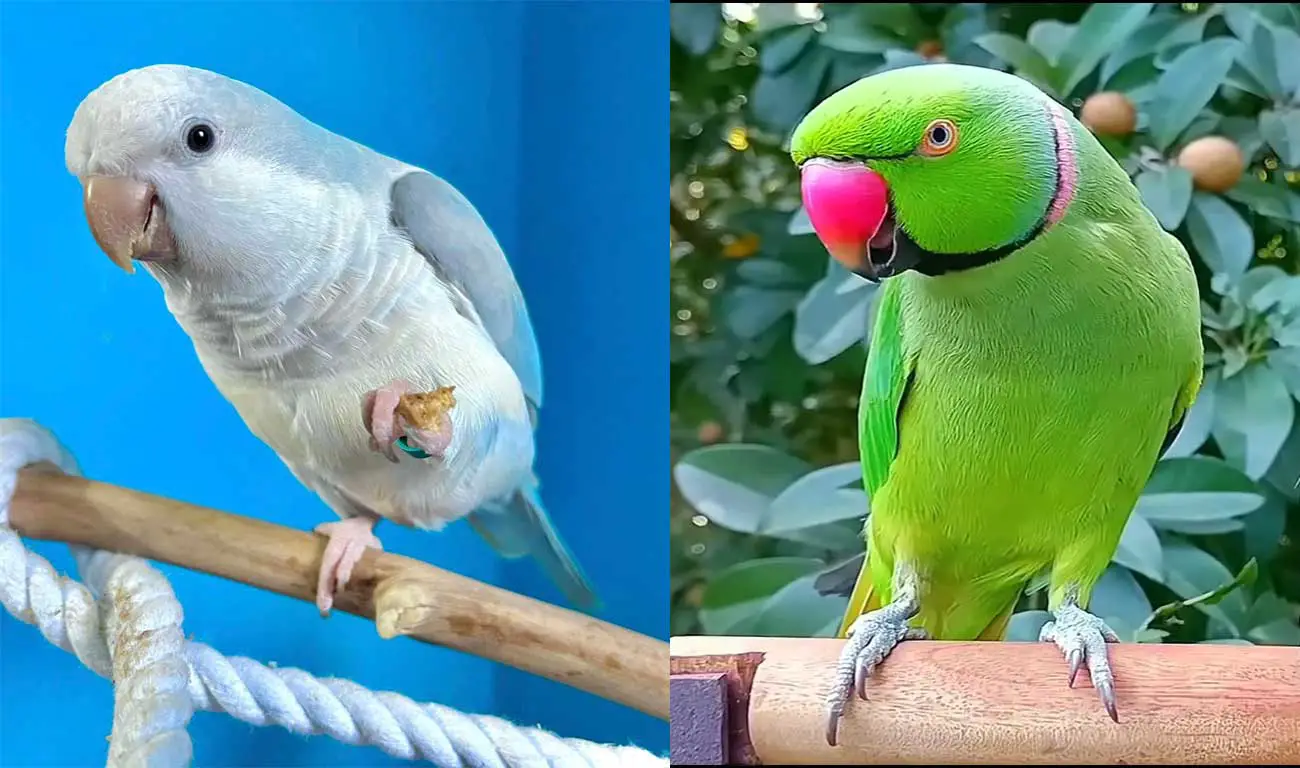The Great Parrot Showdown: Quaker Parrot vs Indian Ringneck
The debate of which one is a better pet bird, the Quaker parakeet or the Indian Ringneck, has been on the scene for a very long time. I’ve been hearing it since my childhood days, but only recently I have found the answer.
Despite being parrots, the Quaker parakeet and the Indian Ringneck have different builds and colors. They do not look identical at all. However, they have many features that make them similar to each other as well.
I have a Quaker parrot and an Indian ringneck in my house, and they get along pretty well. However, the more time I had spent with them, the more I saw the differences between the two.
So, if you want to know which one of them is better suited to be a pet, then take a stroll down the article.
Legal Issue
First thing first, there are some notable differences between owning a Quaker Parrot and an Indian Ringneck. For instance, I’ve found that Quaker Parrots face more legal restrictions in certain states. Some areas consider them invasive and have outright bans due to their potential threat to local ecosystems. On the other hand, Indian Ringnecks have fewer restrictions and are allowed in more states.
I’ve also discovered that Quaker Parrots may be illegal to own in specific cities, such as Chicago, primarily because they can pose risks to agriculture and utility infrastructure. In contrast, Indian Ringnecks seem to be more widely accepted in urban areas.
Quaker Parrot Vs. Indian Ringneck: Which One to Take Home
I have lined up the similarities and differences between the two birds. Take your time reading this part because it will help you understand the ins and outs of Quaker parrots and Indian Ringnecks. You might also figure out which one will be more suitable for your current living conditions.
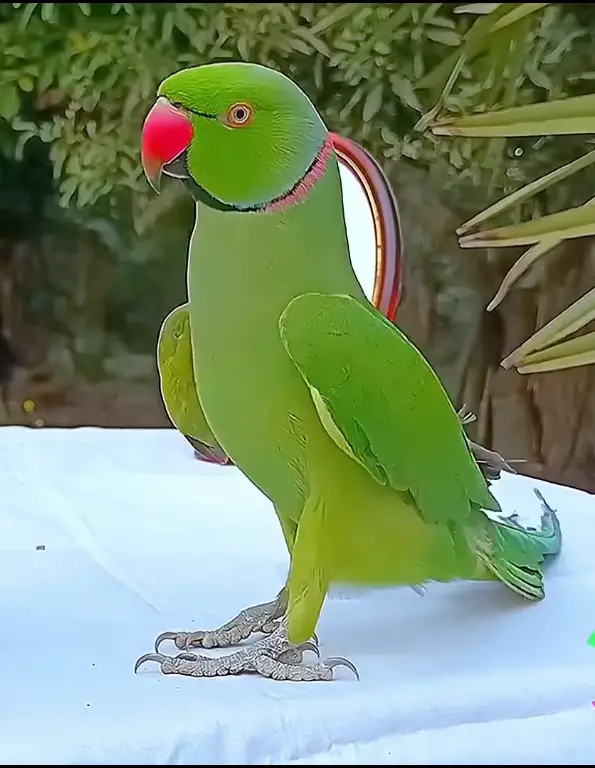
Varying Colors and Sizes
Quaker parrot, aka monk parakeet, comes in a few colors. 90% of all Quaker parrots on the market have features a blue and gray hue. The blue color is spread throughout their head, wings, and back, while the front part (throat, chest, and cheeks) is gray.
Apart from that, monk parakeets come in green, yellow, and red colors as well. The green variant is somewhat similar to the blue one as it also has a gray front. However, the yellow and red variants don’t come with the gray portions.
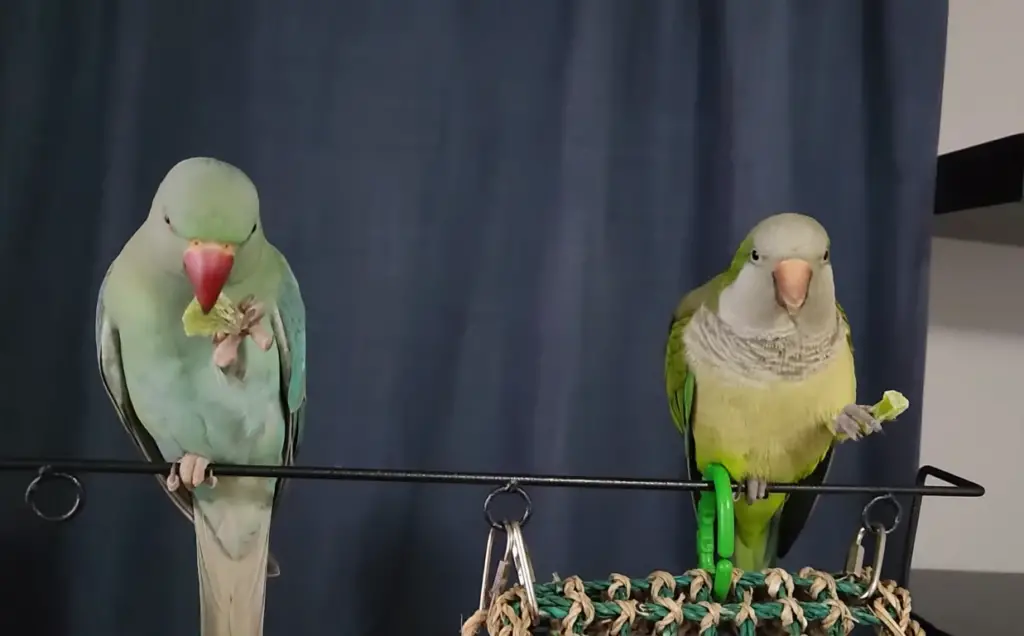
Quaker parrots are medium to small-sized birds. They measure around 11 to 12 inches in length only.
Indian ringneck parakeets, on the other hand, also come in a variety of colors. They are available in many shades, such as bright green, yellow, blue, etc. However, the most accessible is the green variant. It doesn’t matter what color they are; all Indian ringnecks have a specific bright red beak.
Anyways, Indian parakeets are slightly larger than Quaker parrots. The male ringnecks measure around 16 inches in length, whereas the females are about 14 inches.
Do They Have Similar Personalities?
Now, this one is a little tricky. I personally had only one Quaker parrot and two Indian ringnecks in my lifetime; however, I’ve seen and interacted with many of them either in a friend’s, neighbor’s, or relative’s house.
Needless to say, their personalities might differ even if they are of the same breed. For instance, one of my Indian ringnecks, which I had when I was a kid, was pretty aggressive. However, the second one had a playful and charming personality.
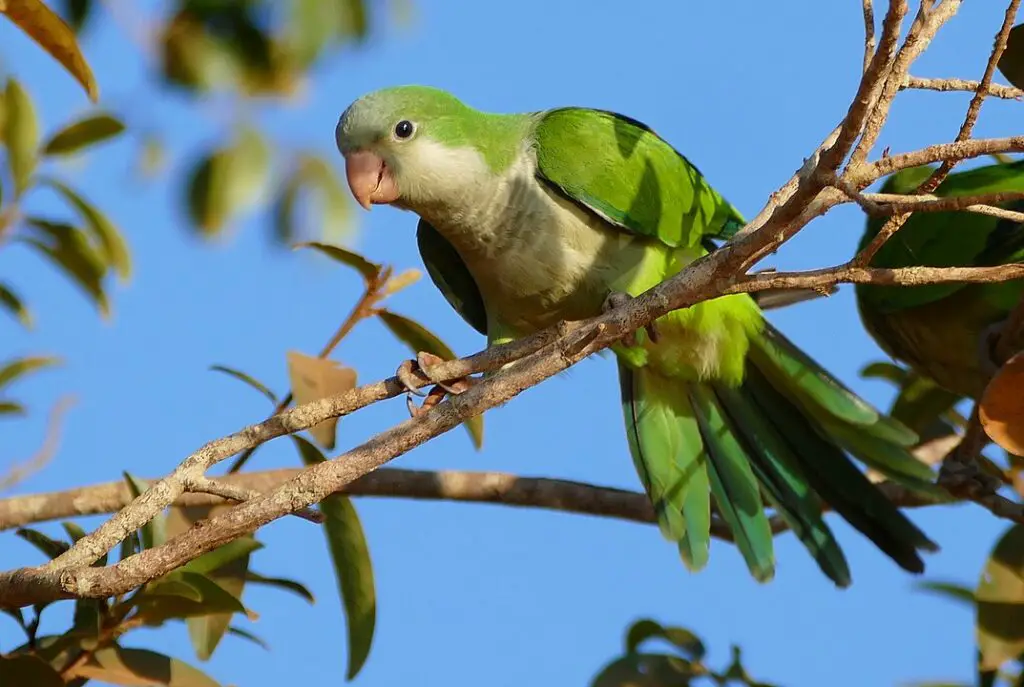
Anyways, from what I’ve gathered so far, quaker parrots love to interact with their owners. More often than not, these birds will quake or bob in a peculiar way. It might seem unnatural, but it’s actually a common thing for these parrots.
Quaker parakeets tend to get neurotic or depressed if they are left alone for a long time. Therefore, you will need to give them a lot of attention or find them a companion.
Indian ringnecks are pretty similar to Quaker parrots. They are outgoing and can be a loyal and loving companion if not neglected. Ringnecks are not shy like some other birds out there. They are quite talkative and are suitable for people who plan on having an outgoing and assertive bird.
Nevertheless, Indian parakeets are prone to night frights, and they are delicate in dealing with turmoil. They might trash around the cage at night, which used to happen quite a lot with my first Indian Ringneck.
What Kind of Food Do They Like?
Both breeds have a similar food diet. They prefer eating vegetables, fruits, seeds, and pellets. They are not very picky eaters, especially Quaker parrots.
Both Quaker parakeets and Indian ringnecks have a good appetite and will eat almost any food you give them. Ringnecks are less to maintain when it comes to food. They don’t overload themselves with the extra bite.
However, quaker parrots tend to get out of control when it comes to food. One of the problems with such birds is that they are prone to obesity. They can develop fatty liver disease, so make sure to monitor their food intake. You should avoid an all-seed diet with Quaker parakeets.
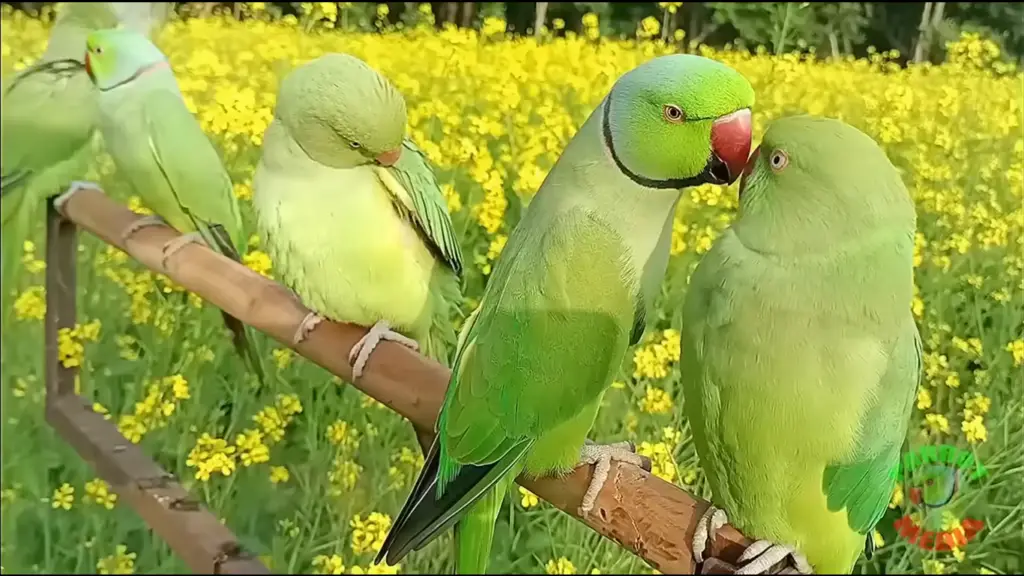
Do They Bite?
Quaker parrots and Indian ringnecks have a history of biting issues. However, it is less dominant in the former. You can easily train a quaker bird to stop biting, but it will take a lot of time for you to keep your Indian ringneck parrot from biting.
My first ringneck parakeet was a biter. It used to bite very aggressively whenever someone came close to the cage or tried to feed it food. There was an instance when my neighbor tried petting the bird, and it bit him so hard that his index finger started bleeding. So, remain cautious about the biting issue with Indian ringnecks.
In any case, if you interact with the birds regularly and train them, then it’s possible to make them stop biting people’s fingers. Indian ringnecks might remain as biters even after you successfully tame them. So, make sure not to reward such behavior. Remember, patience is the key, my friend.
Are These Birds Safe for Houses with Children?
I would say Quaker parrots are safer to have around children than Indian ringnecks. As I said, ringneck parakeets are prone to biting. Trust me, they do not hold back at all; I’ve seen it with my own eyes.
Quaker parakeets are easier to tame, and they do not bite as much as ringnecks. Additionally, the latter might have night frights and start thrashing around the cage at night. They are also very sensitive to commotion, which is something very common in a house with kids.
So, the better choice would be to get a Quaker parrot if you have children.
Which One is a Better Talker?
I will have to side with Indian ringnecks on this one. Don’t get me wrong, quaker parakeets love talking, and they talk a lot when trained properly; however, their speech is not as clear as of the Ringnecks.
I had the opportunity to train both of these breeds, and I’ve seen that Indian parakeets develop the ability to speak faster than Quaker parrots. They have a clearer speech pattern and can remember a lot of words and phrases.
So, if you’re looking to start up a conversation with a bird, then Indian ringnecks are the way to go. Before I forget, you can train these birds to whistle; however, I would recommend you teach them to talk first and then whistle.
If they grow a liking towards whistling, then you’ll have a hard time teaching them to speak.
How Noisy Are These Birds?
Well, both parrots are extremely noisy. If you are sensitive to sound or live in an apartment with neighbors close by, then I suggest you steer clear of these birds.
Quaker and ringneck parakeets become quite noisy in the morning and evening. Before you teach them to speak, they will often scream their heart out. My parrots used to do the same in the morning till I gave them food. Now, it has reduced a lot, though.
So, make sure to keep your earplugs near if you plan on getting a Quaker or Ringneck parrot.
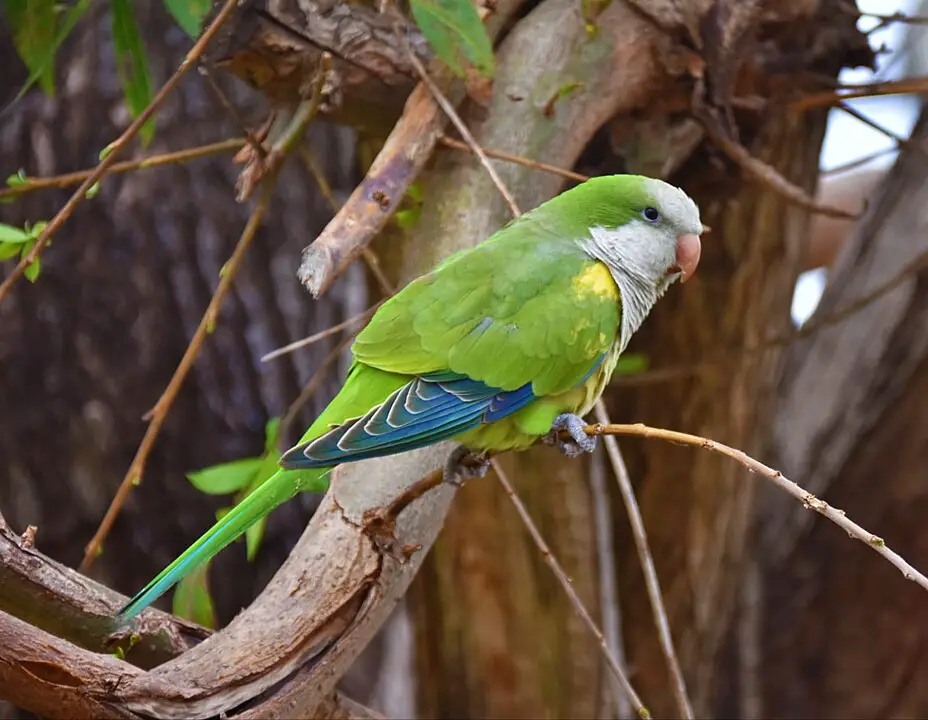
How to Take Care of Them?
Quaker parrots have a problem with biting or running valuables. If left unmonitored, these birds will get bored and start chewing away your furniture.
Thus, make sure to keep chewable toys inside the cage or close the parakeets. It will keep them distracted and prevent them from making fast work of your valuables.
The same rule applies to Indian ringnecks as well. If you don’t keep them occupied with toys, they will channel their destructive energy on something else.
Ringneck parakeets tend to become very fond of their toys. My one holds on to its toy for a very long time and spends a good amount of time playing with it.
Indian ringnecks require a larger cage than Quaker parrots, as they have a longer tail. Even if the birds are of the same size, you will need a bigger cage for the former.
Remember to give these birds enough playtime; if you don’t, it will cause them to fall into depression or have neurotic disorders.
Do they Pluck Feathers?
Compared to quaker parakeets, Indian ringnecks have a higher tendency to pluck their feathers. Feather plucking is a common issue that you will see in most parrots.
Keep them occupied and clean; it should prevent them from plucking off their feathers.
Dominant Health Conditions
Quaker parakeets are prone to feather plucking and fatty liver disease. If you don’t control their diet and make up an exercise regime for them, they will gain weight really fast. Respiratory infections are also common for these birds.
Indian ringnecks, on the other hand, are relatively healthier than the former. They are not as susceptible to infections as Quaker parakeets are. However, keep an eye out for bacterial infections, polyomavirus, aspergillosis, and psittacosis.
Say Hello to Your New Feathered Friend!
As you’ve seen, quaker parrots and Indian ringnecks are much more similar than they are different from each other. Both have a charming and lovely personality. Both love to talk and can be kept as a loyal, fun-loving pet.
Nonetheless, I would be lying to myself if I said there weren’t any significant differences between the two breeds. Honestly, I prefer the overall look of the Indian Ringneck. It has a more vibrant color combination. However, quaker birds are more suitable for people with kids.
So, in the end, everything boils down to your personal preference. My suggestion would be to look at all the pros and cons of these birds and check which one can adjust better to the living conditions of your home.
